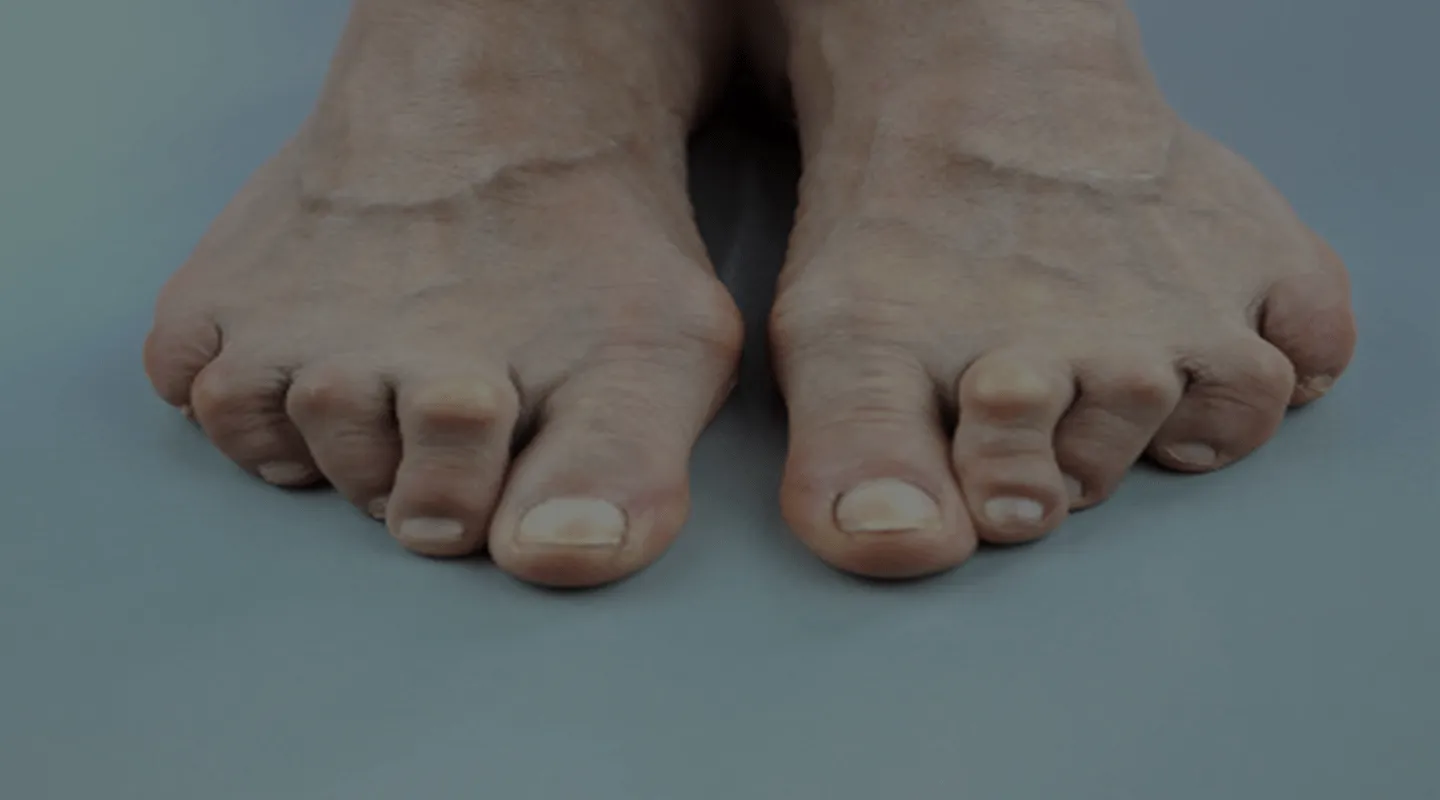
Claw Toe
Your Claw Toe Surgery in Tunisia at an Affordable Price
Enjoy an aesthetic and functional result with care from foot surgery specialists
How does it work?
What is claw toe?
Claw toe is a foot deformity that occurs due to an imbalance in the muscles, tendons, or ligaments that normally keep the toe aligned. The type of shoes you wear, foot structure, trauma, and certain pathological processes can contribute to the development of these deformities. If claw toe becomes bothersome with significant and recurring pain, surgery remains an effective alternative. Thanks to minimally invasive percutaneous surgery, you can have surgery and resume walking the same day.
Diagnosis of a claw toe
The diagnosis of a claw toe can be made visually following a consultation with an orthopedist. However, an X-ray is necessary to identify the exact position of the joint deformities.
Non-surgical treatment of claw toe
The specialist will begin by evaluating the chances of success of conservative treatment. They will try to correct existing deformities using insoles and relieve pressure points by recommending shoes better suited to the patient. Pedicure sessions can also relieve the patient’s pain.
Surgical treatment of claw toe
If the toe deformity is significant, only surgery can remedy it and definitively correct the claw toe. Surgery will correct the toe’s axis. After surgery, the tendons will adapt to the new configuration.
Claw Toe Surgery Price
The price to correct claw toe depends on the nature of the deformity and the number of toes to be operated on. By requesting a personalized quote, we can prepare a detailed offer that includes all expenses related to the procedure, namely medical fees, hospitalization, orthopedic shoes, etc.
Your health, our priority.
Request your free quote.
Assessment before surgery
A radiographic assessment of the foot in question, facing and in profile under load, is necessary. A standard blood test will also be requested if the intervention.
Open surgery
Open surgery is less and less practiced for toe surgery. It involves making an incision of a few centimeters along the toe to be able to work directly on the joints. This technique is increasingly being abandoned in favor of percutaneous surgery.
Percutaneous surgery
Percutaneous foot surgery is an increasingly used surgical technique for foot surgery, both for correcting claw toes or for correcting bunions or Hallux Valgus. Thanks to its minimally invasive technique, it allows for rapid recovery and resumption of walking on the same day. The surgeon performs the surgery using a fluoroscopy X-ray machine. Through small incisions of 1 to 2 mm, the surgeon inserts mini-mills to perform bone work. Unlike the classic open method, they will not use metal to fix the bones.
Post-operative course of claw toe surgery
After claw toe surgery, the toe is immobilized for a period of 2 weeks using dressings made in the operating room. After this period, the toe can be exposed normally.
Our advantages


What is claw toe?
Symptoms
Claw toe presents an abnormal curvature in the joints of one or more of your toes. Moving the affected toe may be difficult or painful. Corns and calluses may result from the toe rubbing against the inside of your shoes, even to the point of bleeding. In addition to the pain caused, an aesthetic problem may also appear.
Origins
The origins of a claw toe can be due to:
- High-heeled shoes or shoes that are too tight can compress your toes to the point where they can no longer lie flat. This curled toe position may persist even when you are barefoot.
- An injury where you jam or break a toe can increase the risk of developing a claw toe.
- Abnormal balance of the toe muscles. This imbalance leads to instability that can cause toe contraction.
What are the factors that increase the risk of developing claw toe?
The risk of claw toe increases with age. Also, women are much more likely than men to develop claw toe. Toe length can also play a role. If your second toe is longer than your big toe, the risk of developing a claw toe is higher. Certain diseases such as arthritis and diabetes can make you more prone to developing foot deformities. Heredity can also play a role.
Complications
At first, a claw toe may retain its flexibility. But after a certain time, the tendons of the toe may contract and tighten, resulting in permanent curvature of the toe. Your shoes may rub against the raised part of the toe, causing painful corns or calluses.
Shoe advice for better prevention against claw toes
You can avoid many foot, heel, and ankle problems with properly fitting shoes. When buying shoes, you should choose models with enough space for your toes and avoid pointed shoes. Avoiding high heels will also help you avoid back problems. Lace-up or strapped shoes are more spacious and adjustable and better fit the shape of the feet.
Contact and request a quote for angioplasty
If you are tempted to correct one or more claw toes in Tunisia with a serious and experienced agency, trust the professionals of Tunisia Destination Santé. Our team is always at your disposal to assist and guide you through all the procedures. We accompany you step by step in the preparation of your file and in the organization of your stay. Do not hesitate to contact us for more information and to request a free, no-obligation quote for your claw toe surgery.
—
Frequently Asked Questions
Untreated claw toe can lead to permanent deformities, chronic pain, and reduced mobility. It can also cause painful calluses and ulcers due to continuous friction with shoes.
Yes, non-surgical techniques such as physical therapy, night splints, orthotics, and specific exercises can help reduce pain and improve toe flexibility.
Yes, claw toe can impair balance and gait by altering weight distribution on the foot and causing an abnormal gait to compensate for pain.
Minimalist shoes or walking barefoot can help strengthen the foot muscles and improve toe flexibility, but should be adopted gradually to avoid injury.
A diet rich in essential nutrients such as calcium, vitamin D, and magnesium can help maintain healthy bones and muscles, which can indirectly help prevent complications related to claw toe.
Certain high-impact sports activities can worsen claw toe, especially if they involve excessive pressure on the toes. It is advisable to favor low-impact exercises such as swimming or cycling.
Yes, myofascial release techniques can help release muscle tension and improve toe mobility, thus reducing the symptoms of claw toe.
Claw toe can make daily activities such as prolonged walking, wearing certain shoes, or even standing for long periods difficult due to pain and deformity.
Yes, there may be a link between claw toe and other podiatric conditions such as plantar fasciitis, as changes in gait and excessive pressure on certain parts of the foot can lead to additional pain and inflammation.
Yes, children can develop claw toe, often due to neurological problems or muscle imbalances. Warning signs include difficulty moving the toes, pain, and a tendency to walk on tiptoe.
